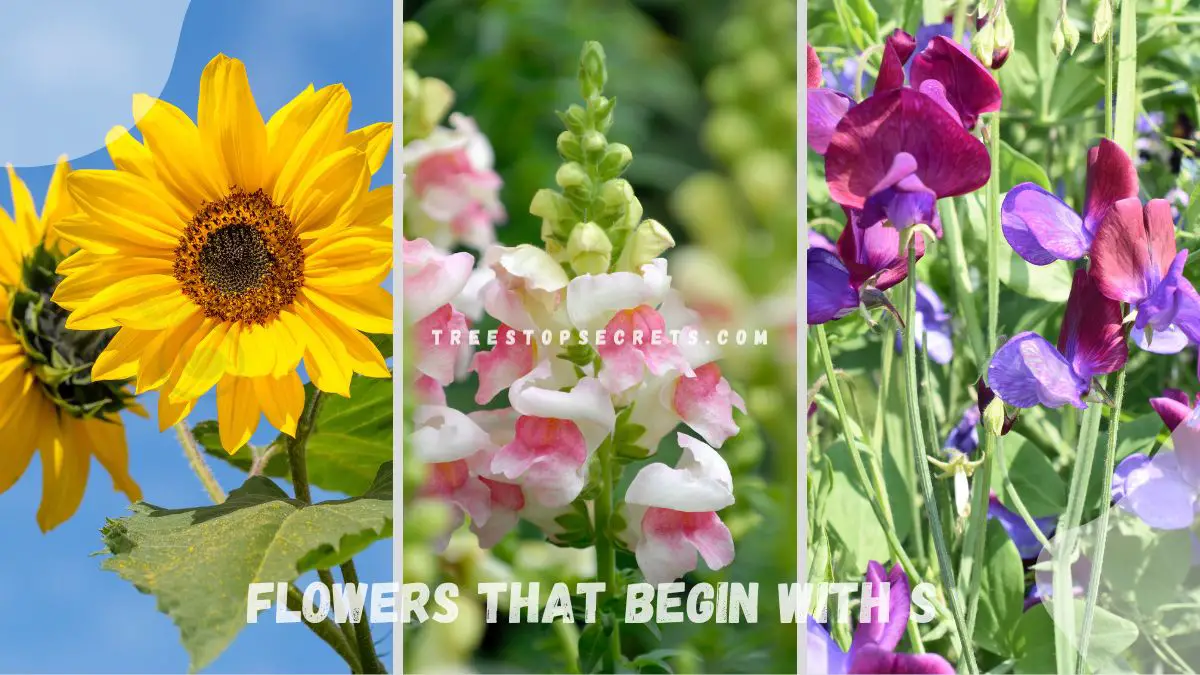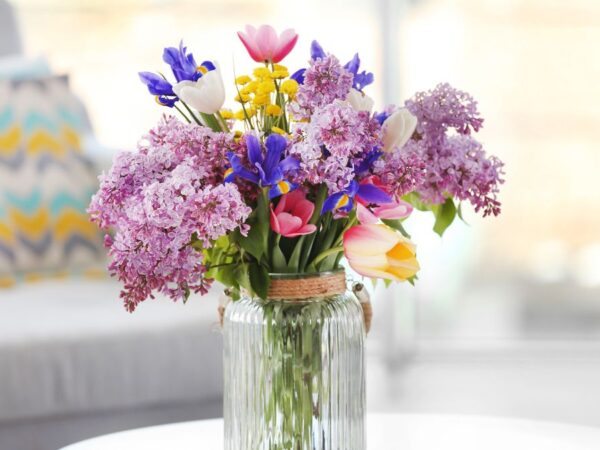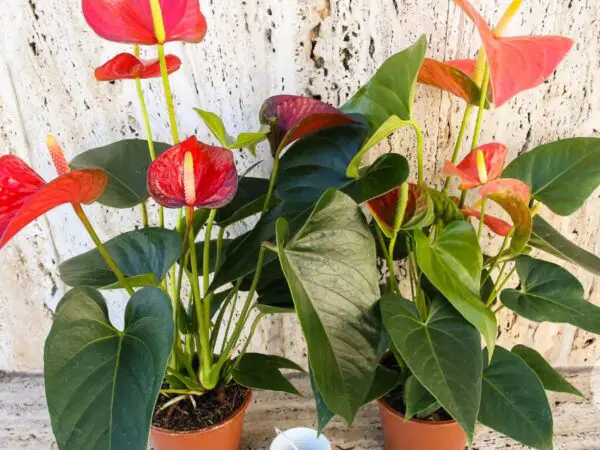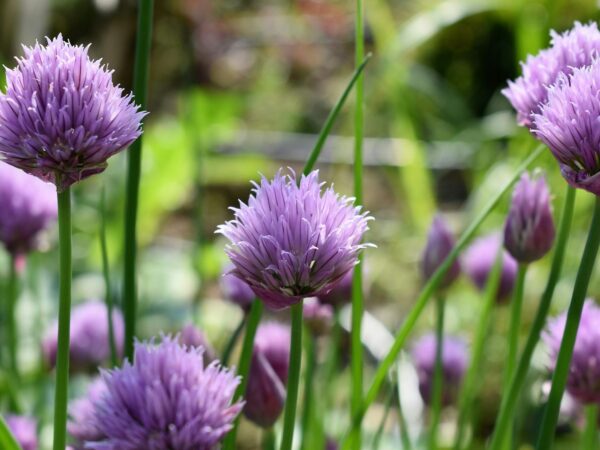If you're searching for beautiful flowers that begin with S, you’ve come to the right place. Whether you're a gardening enthusiast or just love adding a touch of nature to your home, there’s a wide variety of stunning options that start with the letter S. From the popular Sunflower to the elegant Snapdragon, we’ll guide you through some enchanting blooms that will enhance your garden or floral arrangements. Read on to discover more about these captivating flowers and find the perfect fit for your needs.
Here's a quick list of flowers that begin with S, along with their characteristics:
| Flower | Description | Growing Zone |
|---|---|---|
| Sunflower | Tall, vibrant yellow flowers; follows the sun | 4-9 |
| Snapdragon | Varied colors; tubular flowers with "snapping" jaws | 7-10 |
| Sweet Pea | Fragrant climbing plants; delicate pastel flowers | 2-11 |
| Salvia | Spiky blooms in blue, red, or purple; attracts pollinators | 5-10 |
| Snowdrop | Early spring bloomers; white, drooping flowers | 3-8 |
| Scabiosa | Pincushion-like flowers in various colors | 3-7 |
With so many diverse and stunning flowers that start with S, your garden can have something blooming in nearly every season. We have even more exciting details and gardening tips on these flowers, so stay tuned to learn how to make your garden thrive!
Key Takeaways
- Explore a Variety: Discover a range of S flowers, from popular ones to unique varieties, to enhance your garden.
- Nurture with Care: Follow cultivation tips to ensure the health and beauty of your S flowers, creating a thriving garden space.
- Understand Symbolism: Delve into the symbolism and meanings associated with S flowers to add depth and significance to your floral arrangements.
- Pick Popular Picks: Learn about popular S flowers that can serve as focal points in your garden or floral displays.
- Embrace Uniqueness: Consider incorporating unique S flowers to add character and intrigue to your gardening and design projects.
- Design Creatively: Use S flowers thoughtfully in your designs to create visually appealing and meaningful arrangements.
Discovering S Flowers
Common Types
S flowers are popular choices in gardens due to their vibrant colors and unique shapes. Sunflowers are iconic for their large, yellow blooms that follow the sun throughout the day. Snapdragons, known for their resemblance to dragon mouths, come in various hues and add a whimsical touch to any garden. Snowdrops, with their delicate white petals, are some of the earliest bloomers in spring.
- Sunflowers: Large yellow blooms that track the sun
- Snapdragons: Resemble dragon mouths with various hues
- Snowdrops: Delicate white petals, early spring bloomers
These common S flowers, star plants, offer versatility in different garden settings. Sunflowers make striking centerpieces, while snapdragons are perfect for adding height and texture to floral arrangements. Snowdrops thrive in shady areas, making them ideal for woodland gardens.
Botanical Names
Understanding botanical names is essential for precise plant identification. These names follow a scientific classification system based on Latin. For example, the botanical name for sunflower is Helianthus annuus. This system ensures accuracy and consistency in plant naming across regions and languages.
- Botanical names ensure precise plant identification
- Scientific classification system based on Latin
- Example: Sunflower's botanical name is Helianthus annuus
Botanical names differ from common names by providing specific information about a plant's genus and species. While common names can vary regionally or culturally, botanical names are universal among botanists and horticulturists.
Key Characteristics
The key characteristics of S flowers set them apart in the floral world. Stunning colors, such as the bright yellow of sunflowers or the deep purple of snapdragons, catch the eye and add vibrancy to any garden. These flowers also exhibit diverse shapes, from the round faces of sunflowers to the elongated spikes of snapdragons.
- Stunning colors like bright yellow or deep purple
- Diverse shapes from round faces to elongated spikes
S flowers share common traits such as hardiness and adaptability to various climates. Their ability to thrive in different conditions makes them popular choices for both novice and experienced gardeners. Some plant S flowers have unique adaptations, like snapdragons' ability to attract pollinators with their distinctive shape.
Cultivation Tips
Soil Requirements
Flowers that begin with "S" have specific soil preferences crucial for their growth. Well-draining soil is essential to prevent waterlogging, which can harm these plants. Adequate pH levels are vital to ensure nutrient availability for optimal development. To meet these requirements, consider amending the soil with organic matter like compost to improve drainage and nutrient content.
Watering Needs
Understanding the watering needs of "S" flowers is key to their health. Balanced watering is crucial; too much or too little water can be detrimental. These plants typically require regular watering, ensuring the soil is moist but not waterlogged. To avoid issues, monitor the soil moisture regularly and adjust watering accordingly.
Sunlight Exposure
Proper sunlight exposure is essential for flowers starting with "S" to thrive. These plants generally prefer full sun, requiring at least 6-8 hours of direct sunlight daily. Position them in areas where they can receive ample sunlight throughout the day. To ensure healthy growth, avoid placing them in shaded spots that may hinder their development.
Symbolism and Meanings
Cultural Significance
Flowers that begin with "S" hold diverse cultural meanings, enriching traditions worldwide. In Japan, the Sakura symbolizes beauty and transience, celebrated during Hanami festivals. In Native American cultures, the Sunflower represents vitality and adoration, used in rituals and ceremonies.
The Snowdrop flower, originating from Europe, signifies hope and renewal, often associated with the arrival of spring. In Hindu traditions, the Saffron Crocus flower is revered for its auspiciousness and spiritual significance, commonly used in religious ceremonies.
- The Sakura symbolizes beauty and transience
- The Sunflower represents vitality and adoration
- The Snowdrop signifies hope and renewal
- The Saffron Crocus is revered for its auspiciousness
Color Symbolism
Colors within flowers beginning with "S" carry deep symbolic meanings, influencing emotions and concepts. The vibrant Scarlet color found in some flowers evokes passion and energy, symbolizing love and courage across cultures.
The serene Sky Blue hue embodies tranquility and peace, often associated with calmness and serenity. In contrast, the Silver color reflects sophistication and elegance, adding a touch of grace to floral arrangements.
- Scarlet: symbolizes love and courage
- Sky Blue: embodies tranquility and peace
- Silver: reflects sophistication and elegance
Spotlight on Popular S Flowers
Saffron Insights
Saffron flowers are known for their vibrant purple petals and distinctive aroma. The process of extracting saffron spice involves carefully plucking the stigma from each flower. This delicate spice is highly valued in culinary dishes for its rich flavor and bright yellow color.
- Unique Characteristics of Saffron Flowers:
- Purple petals with a vibrant hue
- Distinctive aroma that sets it apart from other flowers
- Extracting Saffron Spice:
- Careful plucking of the stigma from each flower
- Labor-intensive process due to the small quantity of saffron in each flower
- Culinary and Medicinal Uses:
- Culinary: Adds flavor and color to dishes like risotto and paella
- Medicinal: Used in traditional medicine for its antioxidant properties
Sage Overview
Sage plants are characterized by their silvery-green leaves and fragrant scent. In culinary applications, sage is popular for adding depth of flavor to dishes. Medicinally, sage is used for its anti-inflammatory and antioxidant properties.
- Key Features of Sage Plants:
- Silvery-green leaves with a velvety texture
- Aromatic scent that enhances its culinary and medicinal uses
- Culinary and Medicinal Uses:
- Culinary: Enhances the flavor of meats, soups, and stews
- Medicinal: Used to soothe sore throats and aid digestion
- Growing and Caring for Sage:
- Plant in well-draining soil and provide ample sunlight
- Prune regularly to promote healthy growth and bushiness
Snapdragon Guide
Snapdragon flowers are known for their colorful blooms that resemble a dragon's mouth when squeezed. These flowers come in a variety of colors, including pink, red, yellow, and purple. To ensure optimal growth, plant snapdragons in well-draining soil and provide regular watering.
- Distinctive Characteristics of Snapdragon Flowers:
- Colorful blooms that resemble a dragon's mouth
- Unique shape adds visual interest to garden landscapes
- Colors and Varieties Available:
- Pink, red, yellow, purple, and bi-color options
- Varied heights make them versatile for different garden designs
- Planting and Maintenance Tips:
- Choose a sunny location with well-draining soil
- Water regularly but avoid overwatering to prevent root rot
Unique S Flowers
Sea Thrift Traits
Sea thrift flowers, also known as Armeria maritima, feature unique traits such as attractive pink or white flowers atop slender stems. These flowers thrive in coastal environments due to their salt tolerance. They prefer full sun and well-draining soil for optimal growth.
- Unique Traits: Sea thrift flowers boast compact tufts of grass-like leaves and charming spherical blooms.
- Growing Conditions: Ideal conditions for sea thrift include sandy soil, moderate watering, and good air circulation.
- Incorporating into Gardens: To enhance coastal or rock gardens, plant sea thrift in clusters for a striking visual impact.
Sedum Characteristics
Sedum plants, characterized by their succulent nature, are versatile additions to gardens. These plants come in various types, such as Sedum spectabile and Sedum acre, each with unique growth habits. Sedums are easy to care for and thrive in sunny locations with well-drained soil.
- Succulent Nature: Sedums store water in their leaves, making them drought-tolerant and perfect for arid climates.
- Types and Growth Habits: From low-growing ground covers to tall border plants, sedums offer a wide range of options for gardeners.
- Planting and Care: Plant sedums in spring or fall, ensuring they receive adequate sunlight and minimal water.
Sweet Woodruff Profile
Sweet woodruff, scientifically known as Galium odoratum, is a perennial plant valued for its aromatic qualities. This plant features whorls of lance-shaped leaves and delicate white flowers. Traditionally, sweet woodruff has been used for its sweet scent in potpourris and beverages.
- Key Characteristics: Sweet woodruff displays fragrant foliage, making it a popular choice for shaded areas in gardens.
- Aromatic Qualities: The leaves of sweet woodruff emit a pleasant scent often compared to freshly mown hay.
- Cultivation Tips: When planting sweet woodruff, ensure it receives moist soil and partial shade for optimal growth.
Gardening with S Flowers
Planting Guide
Planting flowers that begin with "S" requires attention to detail. Begin by preparing the soil adequately, ensuring it is well-draining and rich in nutrients. Spacing is crucial; follow the recommended distance between plants for optimal growth. When planting, ensure the root ball is at the same level as the surrounding soil. Water newly planted flowers deeply but infrequently to encourage deep root growth. Fertilize periodically to support healthy growth and vibrant blooms.
- Proper soil preparation
- Correct spacing between plants
- Water deeply but infrequently
- Periodic fertilization for healthy growth
Care and Maintenance
Caring for S flowers involves regular maintenance tasks. Pruning helps promote new growth and maintain the plant's shape. Deadheading spent blooms encourages continuous flowering throughout the season. Implement pest control measures promptly to prevent damage. Seasonal care routines are essential; adjust watering and fertilizing based on the plant's needs.
- Regular pruning for new growth
- Deadheading for continuous flowering
- Prompt pest control measures
- Adjust care routines based on seasons
Seasonal Tips
For flowers starting with "S," seasonal care is key to their success. In spring, focus on cleaning up winter debris and preparing the garden for new growth. Summer tasks include regular watering and monitoring for pests. Fall is the time for dividing and transplanting if needed. Winter care involves protecting plants from frost and cold temperatures.
- Spring: Clean up debris and prepare for new growth
- Summer: Monitor watering and pest activity
- Fall: Divide or transplant as necessary
- Winter: Protect from frost and cold temperatures
Designing with S Flowers
Landscape Ideas
When designing landscapes, strategically place Snapdragons to add vertical interest and vibrant colors. Sedums are excellent ground covers for sunny areas, while Salvias attract pollinators. Create a stunning focal point with a Sunflower patch.
- Pros: Versatile flowers, attract pollinators, easy to grow.
- Cons: Some varieties may be invasive.
Container Gardening Enhance your outdoor space with Stocks or Sweet Alyssum in containers of various sizes. Use well-draining soil mixes for Scaevola and ensure adequate sunlight exposure. Regularly water and fertilize these plants for optimal growth.
- Choose containers based on plant size.
- Ensure proper drainage to prevent root rot.
- Place containers in areas with suitable sunlight levels.
Floral Arrangements
Create captivating floral arrangements by combining Stargazer Lilies with Statice for contrasting textures and colors. Pair Snapdragons with Scabiosa for a whimsical touch. When selecting vases, opt for clear glass to showcase the beauty of these blooms.
- Experiment with different color palettes.
- Incorporate varying heights for visual interest.
Final Remarks
You've now explored a variety of S flowers, from their cultivation to symbolism and popular choices. Incorporating these unique blooms in your garden or floral arrangements can add a special touch and meaning. Whether you're drawn to the vibrant Sunflowers or the delicate Snowdrops, there's an S flower for every preference and occasion. Embrace the beauty and significance these flowers bring into your life.
Take this opportunity to enhance your gardening skills and design aesthetics by experimenting with S flowers. Share your newfound knowledge with fellow gardening enthusiasts and spread the joy of these captivating blooms. Your journey with S flowers has just begun, so let your creativity bloom alongside these stunning botanical wonders.
Frequently Asked Questions
What are some popular S flowers to consider for my garden?
e popular S flowers to consider for your garden include sunflowers, snapdragons, stock flowers, sweet peas, and statice. These flowers offer a variety of colors, sizes, and growth habits to enhance your garden's beauty.
How can I incorporate S flowers into my garden design effectively?
Incorporate S flowers into your garden design by considering their height, color palette, and blooming season. Plant taller S flowers at the back of borders or in the center of beds, mix different shades of S flowers for visual interest, and ensure a balance of early, mid, and late-blooming varieties.
What do S flowers symbolize and what meanings do they hold?
S flowers can symbolize various meanings such as strength, success, sincerity, sweetness, and sympathy. Understanding the symbolism behind S flowers can help you choose the right ones to convey specific messages or emotions in floral arrangements or gardens.
Are there any unique S flowers that I should know about?
Unique S flowers like scabiosa, salvia, strawflowers, saxifrage, and spider lilies offer distinctive characteristics that can add intrigue to your garden. Explore these lesser-known S flowers to create a garden that stands out with uncommon beauty.
What are some cultivation tips for maintaining S flowers in my garden?
Maintain healthy S flowers in your garden by providing adequate sunlight, water, and well-draining soil. Regular deadheading, pruning, and fertilizing can also promote continuous blooming and overall plant health for your S flowers.
Image Source: Paid image from CANVA





